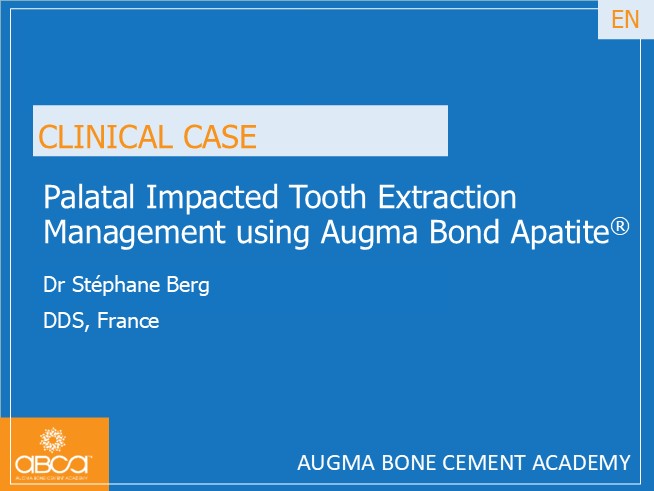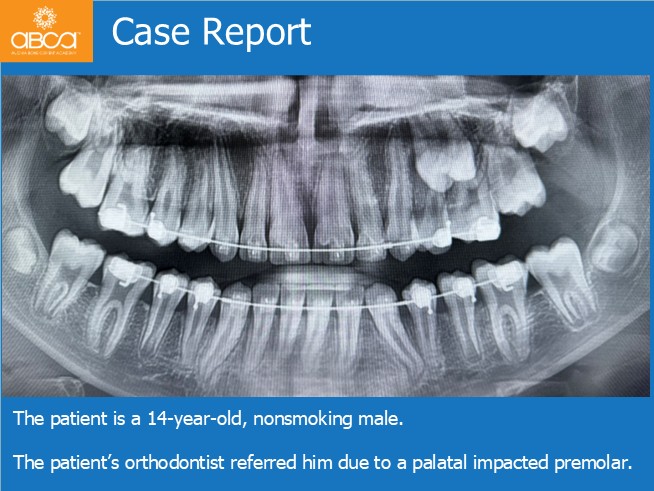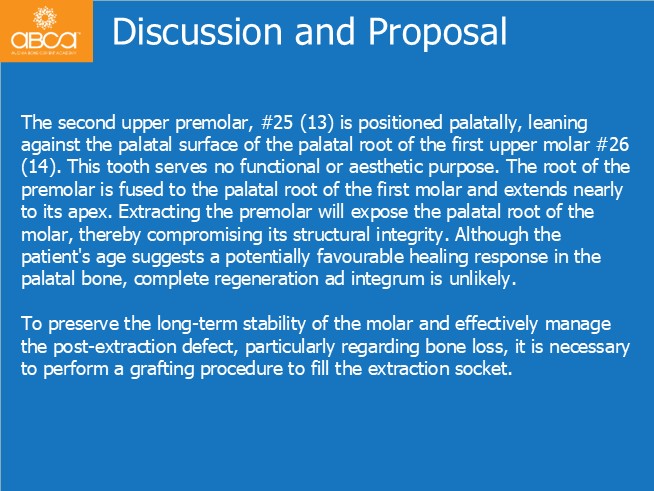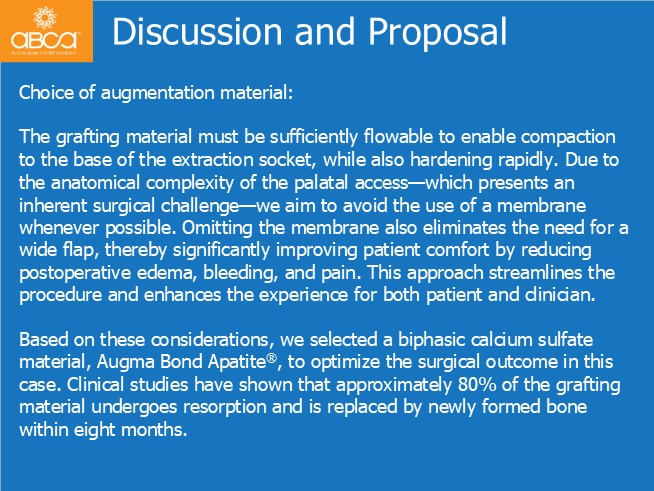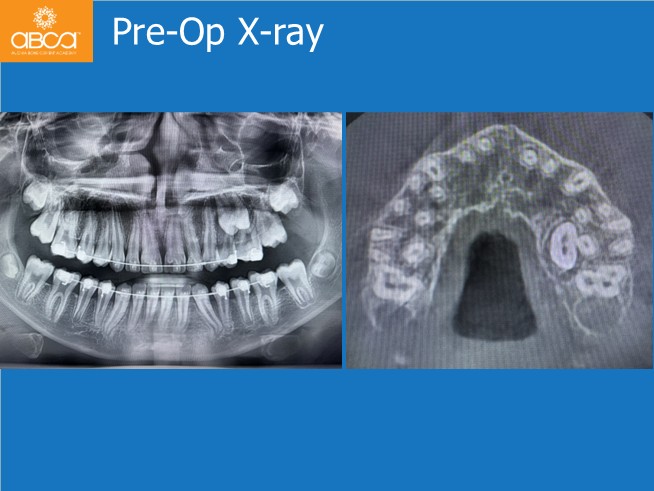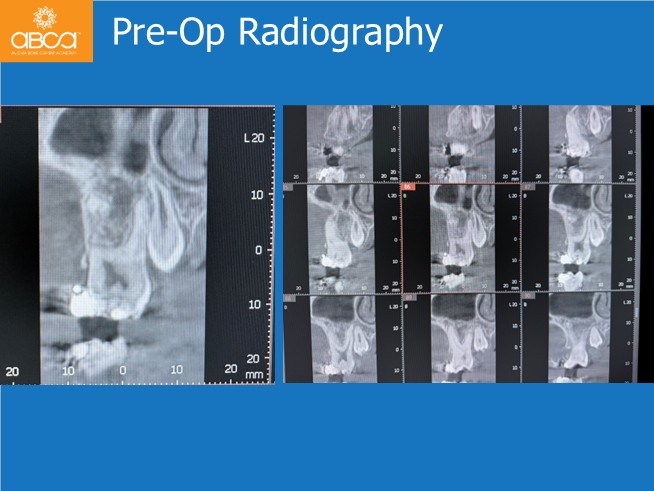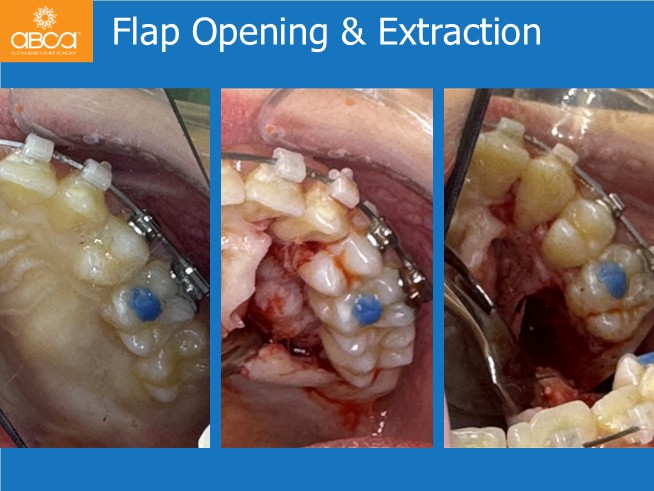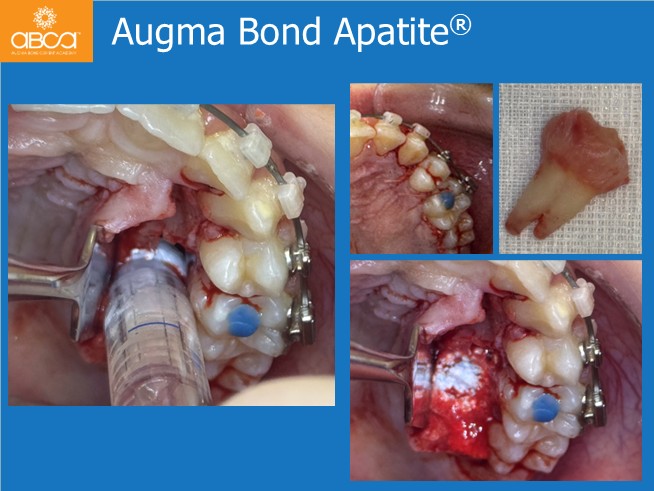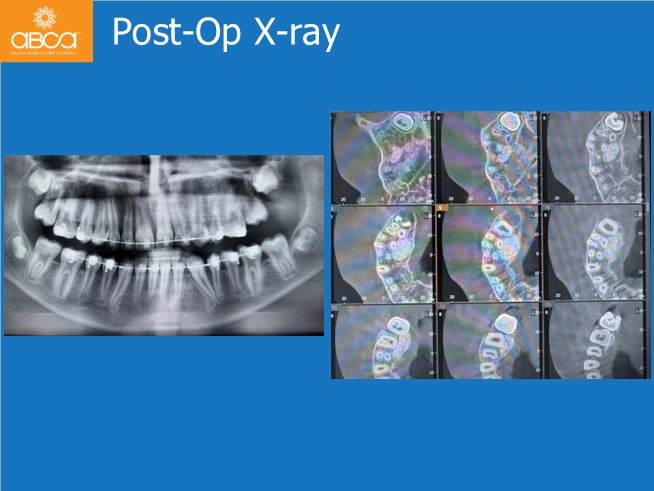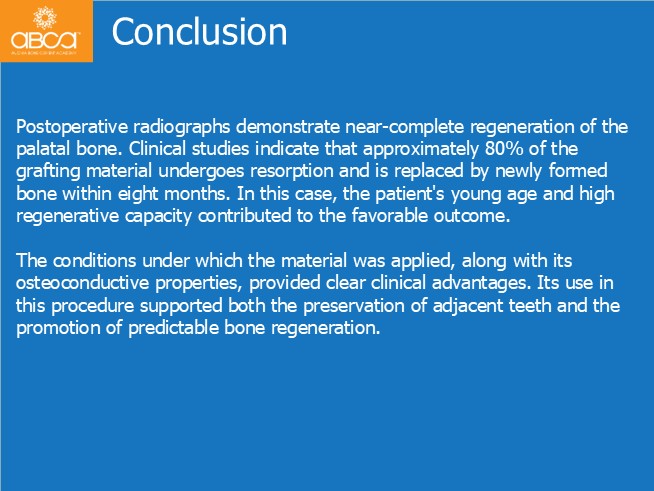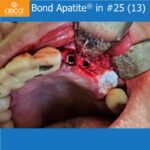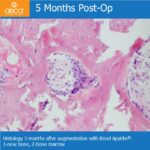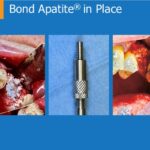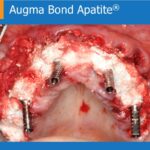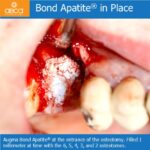The patient is a 14-year-old, nonsmoking male. The patient’s orthodontist referred him due to a palatal impacted premolar.
The second upper premolar, #25 (13) is positioned palatally, leaning against the palatal surface of the palatal root of the first upper molar #26 (14). This tooth serves no functional or aesthetic purpose. The root of the premolar is fused to the palatal root of the first molar and extends nearly to its apex. Extracting the premolar will expose the palatal root of the molar, thereby compromising its structural integrity. Although the patient’s age suggests a potentially favorable healing response in the palatal bone, complete regeneration ad integrum is unlikely.
To preserve the long-term stability of the molar and effectively manage the post-extraction defect, particularly regarding bone loss, it is necessary to perform a grafting procedure to fill the extraction socket.
Postoperative radiographs demonstrate near-complete regeneration of the palatal bone. Clinical studies indicate that approximately 80% of the grafting material undergoes resorption and is replaced by newly formed bone within eight months. In this case, the patient’s young age and high regenerative capacity contributed to the favorable outcome.
